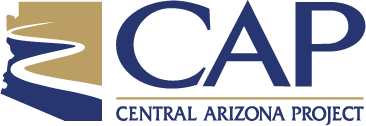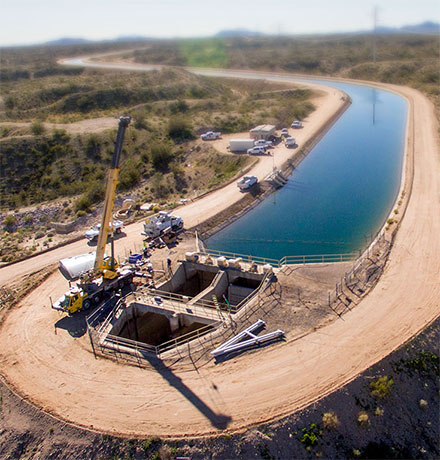Property Taxes
CAWCD Property Tax Questions & Answers
The CAWCD tax is for the Central Arizona Water Conservation District which is the entity that governs the Central Arizona Project.
CAP is a 336-mile-long aqueduct that annually brings about 1.5 million acre-feet of Colorado River water into CAP’s three county service area which is Maricopa, Pinal and Pima counties. CAP water is used by cities, water utilities, agricultural districts and Native American communities throughout central and southern Arizona.
The CAWCD tax is levied to help pay the cost of construction and operations of Central Arizona Project. Property owners in Maricopa, Pinal and Pima counties are the only ones that pay a property tax to CAWCD.
The CAWCD tax rate currently is 10-cents per $100 of assessed valuation. CAWCD also collects 4-cents per $100 of assessed valuation which can be used by the Arizona Water Banking Authority to store water underground and purchase long-term storage credits, as well as for any CAP operations, maintenance or repayment costs.
There are two reasons. First, without CAP water deliveries chances are many people would have to sink wells and depend on the same aquifer that supplies you. If that were to happen, your aquifer could go dry or you would have to sink your well deeper and deeper. Secondly, although you may not directly use CAP water, many cities depend upon it. That tax, like a school tax for those who have no children or whose children are grown and out of school, is simply the cost of living in society. It is similar to paying for roads and highways we may not travel but those roads are critical infrastructure for our state.
CAP supports the economy of the state by providing a reliable, renewable water supply, which keeps property values up for all homeowners. In a recent research study conducted by Arizona State University for CAP, the Colorado River water CAP delivered from 1986 through 2017 supported Arizona’s gross state product (GSP) with $2 trillion in economic benefits. By delivering Colorado River water consistently, CAP has dramatically and positively changed the economic and environmental landscape of our state.
The tax rate is set each year by the CAP Board of Directors. The 15-member Board is popularly elected.
The maximum tax rate allowed by law is 10-cents per $100 of assessed valuation. CAP is collecting this amount in order to have sufficient operational funds to pay back the federal government for the costs of construction of the system and to help protect Arizona’s future water supplies. At 10-cents, a $200,000 home equates to $20/ year.
CAGRD Assessments Questions & Answers
Under current State of Arizona water management laws, your house could not have been built without enrollment in CAGRD. Residential subdivisions developed after February 1995 can no longer rely on groundwater as their exclusive water supply. The developer of your subdivision enrolled your home in the CAGRD so that CAGRD would replenish or replace the groundwater pumped from an aquifer to serve your home. CAGRD replaces the groundwater you use through a process called recharge or replenishment.
Yes. By State law, you must pay the cost of replacing the groundwater you use. This cost is included as a line item on your property tax bill and must be paid to the county along with your property tax payment. The county then transfers that money to CAGRD to be used to buy and recharge renewable water and related infrastructure to replenish the groundwater delivered to your home during the last year.
You pay the cost of replacing the groundwater you used. Each year, water companies that serve subdivisions relying on CAGRD replenishment send a report of how much groundwater was used by each individual property. Based on those reports, CAGRD annually determines its total replenishment obligation for all of its members along with the cost to satisfy that obligation through the purchase and recharge of renewable water supplies. You then pay the cost to replenish the amount of groundwater used on your property.
Your assessment is determined by the amount of groundwater delivered to your home by your water provider. Your assessment is different than your neighbor’s because you used different amounts of groundwater during the previous year.
Use less groundwater and you will pay less to CAGRD. The assessment is based on the amount of groundwater you use and what it costs CAGRD to replenish that groundwater.
Under current law, you cannot get your home out of the CAGRD. However, if your water provider were to switch from groundwater to a renewable surface water supply, your CAGRD assessment would be $0.
Visit www.CAGRD.com for more information.
Property Tax and Assessment Fact Sheet
The fact sheet includes questions and answers related to CAWCD property taxes and CAGRD assessments.










